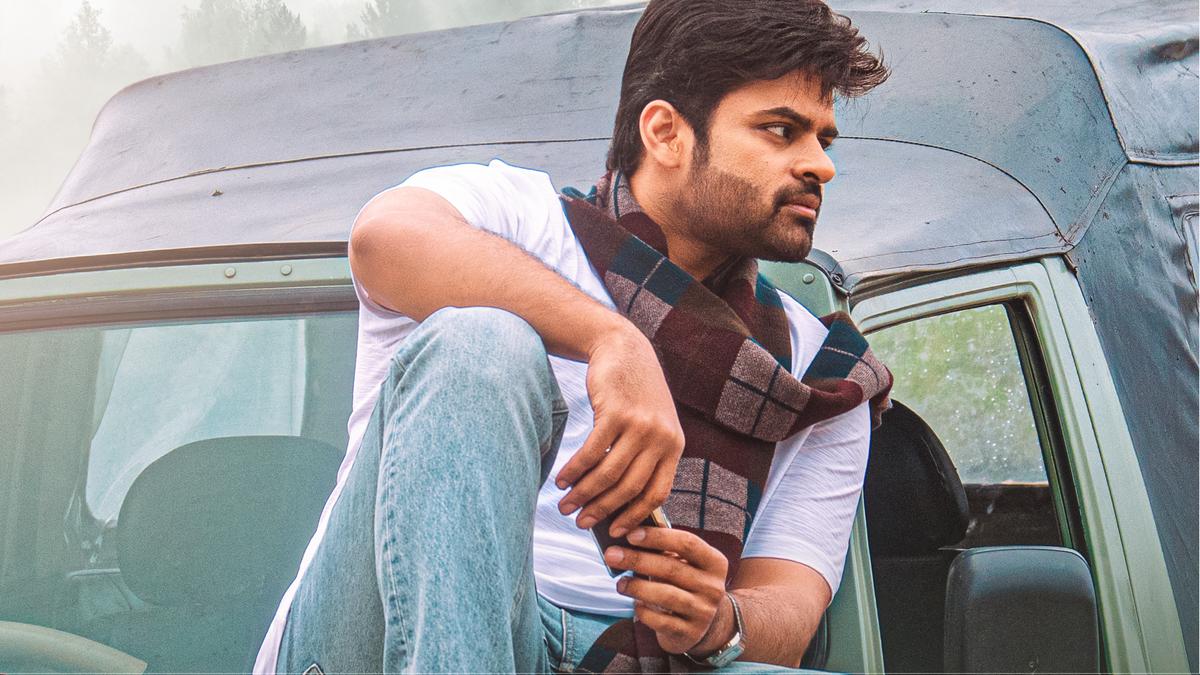
‘Virupaksha’ movie review: Invokes fear without the gimmicks
The Hindu
‘Virupaksha’ movie review: Sai Dharam Tej and Samyuktha Menon’s film directed by Karthik Dandu invokes fear without the gimmicks
When a story discusses paranormal activities, it is easy to brush it aside as superstition. The task of the storyteller, then, is to build the world of the story such that the viewer is drawn into it and remains invested in the mysterious happenings and begins to empathise with some of the characters. Director Karthik Varma Dandu who has written the story of the Telugu film Virupaksha, which has screenplay by Sukumar, builds the make-believe world of Rudravanam village diligently. When a series of eerie events unfold, I found myself wondering why a character should invite trouble by walking into the jungle at night or why another character crosses a line that is supposedly sacrosanct. An hour into the film, a particularly spooky incident sets the stage for the protagonist, played by Sai Dharam Tej, to begin a quest.
An incident that happened in the late 1970s becomes the premise for a chunk of the story that takes place in 1991. The 1990s setting helps the makers build the fear quotient minus mobile phones and social media; help is not a call or click away.
Surya (Sai Dharam Tej) visits Rudravanam village accompanied by his mother. They are greeted by what the mother thinks could be a bad omen. Surya dismisses it as a possibility in the forests. In Rudravanam, life revolves around the village deity and ritualistic practices, guided by the temple priest (Sai Chand). A hurried and superficially written romance brews between Surya and Nandini (Samyuktha Menon), daughter of the sarpanch (Rajiv Kanakala).
Srinagendra Tangala’s production design and Shamdat Sainudeen’s cinematography help in giving the village an authentic look and most characters seem fit into that world. The only one who is given the allowance to look glamorous is the female lead. More than the Surya-Nandini love story, the subplot involving another couple comes across as realistic.
The story follows a few predictable trajectories. We know that Surya will end up staying longer in the village and will become their saviour. For a long time, he is privy to the events in the village without being directly connected to them. The sense of purpose kicks in when there is a threat to a loved one and he begins a quest.
We get plenty of night sequences (some of which doff the hat to Manoj Night Shyamalan), unexplained deaths, a desolated mansion and rituals of different kinds. Along with the cinematography, Ajaneesh Loknath’s background score, Navin Nooli’s editing and remarkable sound design ensure that the interest is sustained and the narrative delivers chills from time to time. There are no screeching ghosts, no gory jumpscares but enough situations to invoke fear. A story such as this is also bound to be flashback heavy to unravel a few plot points. These reveals are effective and also help to sidestep certain cliched tropes. To explain further would mean revealing spoilers. And thankfully, the film has just two situational songs and half an action sequence that soon outlives its welcome.
Sai Dharam Tej fits the bill as an outsider investigating a mystery. He is happy being a bystander until he finds himself in a spot. Samyuktha has a good screen presence and makes it count in the later portions that demand something more from her. The only quibble about the narrative is the weak romance early on. Had this portion been written and narrated better, the final portions would have had a better impact. Sai Chand, Brahmaji, Ajay and several others in the supporting cast add to Virupaksha’s strength.

“Writing, in general, is a very solitary process,” says Yauvanika Chopra, Associate Director at The New India Foundation (NIF), which, earlier this year, announced the 12th edition of its NIF Book Fellowships for research and scholarship about Indian history after Independence. While authors, in general, are built for it, it can still get very lonely, says Chopra, pointing out that the fellowship’s community support is as valuable as the monetary benefits it offers. “There is a solid community of NIF fellows, trustees, language experts, jury members, all of whom are incredibly competent,” she says. “They really help make authors feel supported from manuscript to publication, so you never feel like you’re struggling through isolation.”

Several principals of government and private schools in Delhi on Tuesday said the Directorate of Education (DoE) circular from a day earlier, directing schools to conduct classes in ‘hybrid’ mode, had caused confusion regarding day-to-day operations as they did not know how many students would return to school from Wednesday and how would teachers instruct in two modes — online and in person — at once. The DoE circular on Monday had also stated that the option to “exercise online mode of education, wherever available, shall vest with the students and their guardians”. Several schoolteachers also expressed confusion regarding the DoE order. A government schoolteacher said he was unsure of how to cope with the resumption of physical classes, given that the order directing government offices to ensure that 50% of the employees work from home is still in place. On Monday, the Commission for Air Quality Management in the National Capital Region and Adjoining Areas (CAQM) had, on the orders of the Supreme Court, directed schools in Delhi-NCR to shift classes to the hybrid mode, following which the DoE had issued the circular. The court had urged the Centre’s pollution watchdog to consider restarting physical classes due to many students missing out on the mid-day meals and lacking the necessary means to attend classes online. The CAQM had, on November 20, asked schools in Delhi-NCR to shift to the online mode of teaching.









